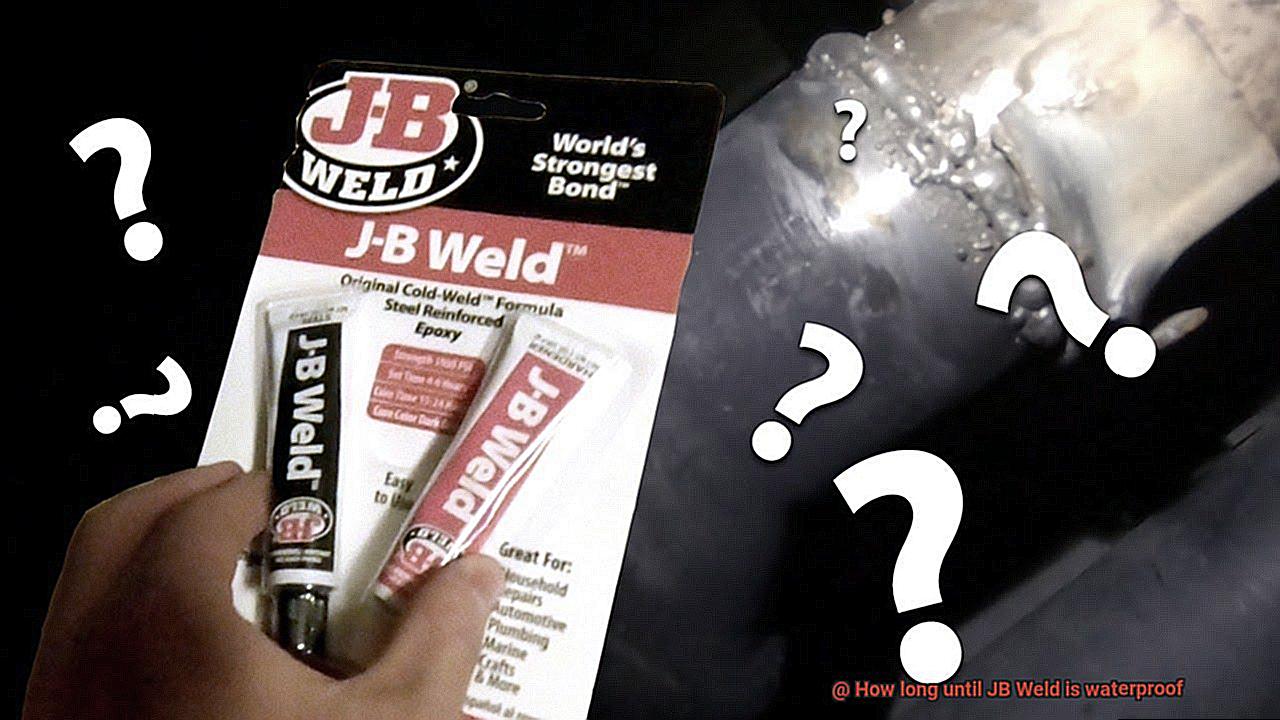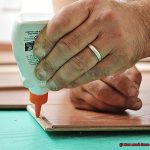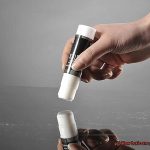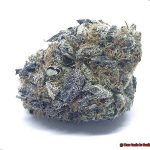Welcome to the exciting world of DIY repairs and fixes. Whether you’re tackling a leaky pipe or rescuing a shattered heirloom, adhesive products are like superheroes in your toolbox. Among these mighty options, JB Weld stands tall as a reliable and versatile champion. But how long does it take for this remarkable epoxy to reach its full waterproof potential?
In this blog post, we’ll embark on an adventure through the fascinating journey of JB Weld as it sets and cures, culminating in its renowned ability to repel water. So grab your favorite mug of coffee and join us as we dive deep into the secrets of JB Weld.
JB Weld, a two-part epoxy adhesive, springs into action when its resin and hardener components mingle. This chemical reaction kickstarts the hardening process, forging an unbreakable bond that can withstand extreme pressure and temperature fluctuations. However, don’t expect immediate waterproofing capabilities from JB Weld during this stage.
The initial curing period typically takes around 4-6 hours after application, during which time the adhesive solidifies to some extent. But let’s be honest – it’s not quite ready to conquer water just yet. To unlock its true potential, JB Weld craves more time to cure.
Enter “cross-linking,” the secret ingredient behind JB Weld’s journey towards becoming waterproof. During extended curing, the molecular chains of this epoxy form an intricate network that toughens its surface against water intrusion and environmental challenges. This cross-linking process is what transforms JB Weld into your go-to solution for fixing leaks, sealing cracks, or conquering any water-related repair project.
So how long does it take for JB Weld to achieve complete water resistance? Experts usually recommend giving it up to 24 hours of uninterrupted curing time for maximum solidity. During this extra duration, those molecular chains interlock, creating a robust shield that water can’t penetrate.
Of course, curing times may vary depending on factors such as temperature, humidity, and the specific application at hand. Cooler temperatures might slow down the process, while higher temperatures can speed it up. Therefore, it’s crucial to consult JB Weld’s instructions for accurate curing durations tailored to your project.
In conclusion, while JB Weld starts its hardening journey within a few hours, it demands a little extra patience for its waterproofing powers to fully awaken. Allowing this epoxy to cure for the recommended time will ensure that it becomes
What is JB Weld?
Contents
Look no further than the mighty JB Weld. This formidable epoxy adhesive has captured the hearts of DIY enthusiasts and professionals alike, thanks to its exceptional bonding capabilities. Journey with us as we embark on a thrilling exploration into the world of JB Weld, uncovering its secrets, unraveling its uses, and delving into its waterproofing prowess.
The Marvelous Composition of JB Weld:
JB Weld is not your ordinary adhesive; it is a champion in the realm of epoxy adhesives. Composed of two separate components – the resilient resin and the indomitable hardener – it possesses the power to forge an unyielding bond. When these components unite in a harmonious chemical dance, a transformation takes place, birthing a bond that is both mighty and enduring. With this formidable adhesive at your disposal, no material is beyond your grasp. Metal, wood, plastic, ceramics – all bow before the awe-inspiring might of JB Weld.
Unleashing the Power of JB Weld:
- Automotive Repairs: When the engine block cracks or the radiator springs a leak, fear not, for JB Weld emerges as the valiant savior. With its exceptional resistance to high temperatures, it stands tall against the scorching heat generated by engines, ensuring that your automotive repairs endure the test of time.
- Plumbing Fixes: Pipes whisper their secrets of leaks and tanks betray their watery woes – it is then that JB Weld emerges as the guardian of plumbing perfection. Its watertight properties become an impenetrable shield, sealing leaks in pipes and faucets like a mythical hero protecting its realm.
- Household Projects: In the kingdom of household projects, where broken ceramics mourn their shattered beauty and fractured furniture yearns for restoration, JB Weld reigns supreme. Its versatility knows no bounds, as it deftly mends various materials found within the confines of your humble abode.
The Aquatic Enigma: Waterproofing Capabilities:
As JB Weld embarks on its journey towards greatness, it must undergo a transformation – a metamorphosis into a waterproof wonder. Though it reaches its initial set within 4-6 hours of application, it yearns for more. Awaiting the passage of time, it fully cures after 15-24 hours, ascending to the zenith of its strength and embracing complete waterproofing.
Yet, this journey is not without its trials. The temperature and humidity of its surroundings become agents of change, dictating the pace of its transformation. Warmth breathes life into JB Weld’s ambitions, accelerating the curing process. Conversely, cold temperatures and high humidity levels may extend this voyage, urging patience upon those who seek its waterproofing embrace. Thus, it is paramount to wield JB Weld in an environment that is well-ventilated, with temperatures and humidity levels that offer solace to this mighty adhesive.
How Does JB Weld Work?
In the world of DIY projects, JB Weld is the ultimate superhero adhesive, swooping in to save the day when disaster strikes. But how does this miracle worker actually work its magic? Well, it’s all about the power of chemistry and a two-part epoxy formula that creates a bond so strong it can withstand even the toughest challenges.
Let’s break it down step by step:
- The Ingredients: JB Weld consists of two components – a resin and a hardener. These two parts are like puzzle pieces that need to fit together perfectly for the magic to happen.
- Mixing: To activate JB Weld’s superpowers, you need to mix the resin and hardener in equal parts. The specific ratio may vary depending on the product, so be sure to follow the instructions on the package. Don’t worry, you don’t need a fancy lab coat and goggles for this – just a clean surface and a mixing tool.
- Time is of the Essence: Once you’ve mixed the components, you have a limited working time of around 15-25 minutes. During this window, you can apply the adhesive to the surfaces that need bonding and shape it as necessary. Be quick though, as JB Weld sets fast.
- Curing and Hardening: After application, JB Weld begins its transformation into a rock-solid bond. Within 4-6 hours, it reaches a “tack-free” state, meaning it’s no longer sticky to the touch. However, keep in mind that curing time can be influenced by factors like temperature and humidity. Cooler temperatures and higher humidity levels can slow down the process.
- Full Cure Time: While JB Weld may feel dry after initial curing, it’s not fully cured or waterproof yet. To achieve maximum strength and waterproofing abilities, give it a full cure time of 15-24 hours. During this period, the adhesive continues to harden and form an unbreakable bond with the surfaces it’s applied to.
- The Superhero Bond: Once fully cured, JB Weld creates a permanent bond that can withstand water, chemicals, heat, and vibrations. It’s like having a superhero sidekick that will never let you down.
However, even superheroes have their limits. While JB Weld is excellent at waterproofing, it’s not recommended for continuous underwater applications or long-term submersion. So unfortunately, you won’t be able to use it to glue your favorite fish tank back together.
Factors that Affect Curing Time
In this blog post, we will embark on a journey through the various elements that affect JB Weld’s curing time, ranging from temperature and humidity to surface preparation and post-curing techniques.
Temperature: Hot or Cold?
Temperature is a pivotal player in the JB Weld curing process. Higher temperatures expedite curing, while lower temperatures slow it down. Ideally, strive for temperatures between 50°F and 90°F (10°C and 32°C) to ensure optimal curing. Below 50°F, the process may significantly decelerate, while temperatures above 90°F can accelerate it to lightning speed.
Mixing Ratio Matters:
To achieve the perfect curing time, it is vital to mix JB Weld’s two components – the resin and hardener – in the correct ratio. Deviating from the manufacturer’s instructions can affect both the curing time and bond strength. Hence, always approach mixing with utmost diligence and precision.
Thickness of Application:
The thickness of the JB Weld application also impacts curing time. Thicker layers take longer to cure compared to their thinner counterparts. For quicker results, apply thin layers and allow each layer to cure before adding additional coats if necessary. This strategic approach guarantees speed without compromising quality.
Surface Preparation:
Proper surface preparation acts as the key to unlocking desired curing times with JB Weld. Ensure that surfaces are clean, dry, and devoid of contaminants like oil, grease, or rust. Any residue or impurities on the surface can hinder the curing process and prolong drying times. Embrace a meticulous approach toward surface preparation for impeccable results.
Humidity and Moisture:
Humidity levels and exposure to moisture can significantly impact JB Weld’s curing time. High humidity or excessive moisture can meddle with the chemical reaction responsible for curing, leading to prolonged drying times. Work in a dry environment and shield freshly applied JB Weld from moisture until it has completely cured to perfection.
Substrate Type:
Different substrates wield diverse effects on curing time. Materials with high thermal conductivity, such as metals, tend to exhibit faster curing times. Conversely, porous materials or those with low thermal conductivity may slow down the curing process. Consider the substrate type to estimate the expected curing time accurately and plan accordingly.
Post-Curing for Extra Strength:
Once the initial curing time is complete, consider undertaking post-curing techniques for JB Weld’s enhanced strength and durability. This step involves subjecting the cured bond to elevated temperatures for a specific duration. Post-curing optimizes mechanical properties and augments resistance against environmental factors, ensuring an unwavering bond.
General Curing Times for JB Weld
Well, buckle up and get ready for an adhesive adventure as we dive into the world of JB Weld’s general curing times.
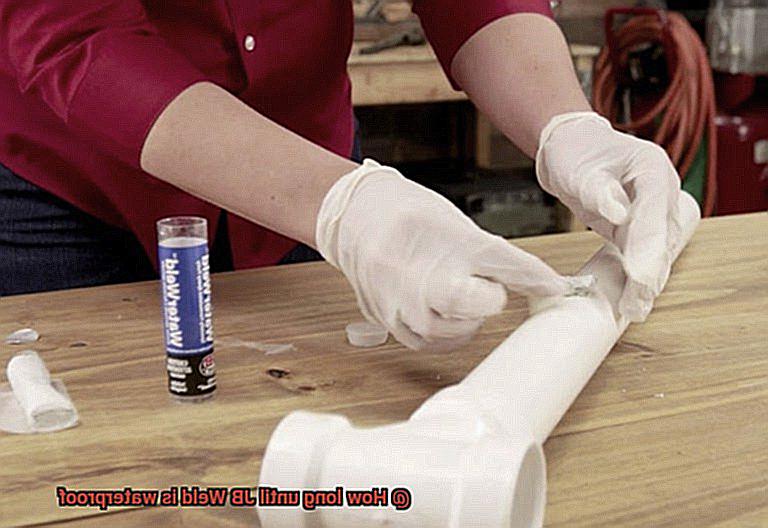
Curing, my friends, is the process in which the adhesive hardens and reaches its full strength. And let me tell you, JB Weld packs quite a punch in that department. Under ideal conditions, at a room temperature of around 70°F or 21°C, with a humidity level between 30% and 50%, JB Weld will fully cure in about 15-24 hours. Yes, you read that right – just a day or so and you’ll have a bond that can withstand all sorts of stresses and strains.
But hold on tight because here’s where things get interesting. Temperature and humidity can play tricks on JB Weld’s curing time. In colder temperatures, it’s best to give it some extra time to cure. And if you find yourself in a humid environment, well, patience is key because higher humidity levels can slow down the curing process.
Now, don’t let appearances fool you. Even though JB Weld may feel solid after the recommended curing time, it continues to gain strength over time. So, my fellow glue enthusiasts, be patient. Let that bond bask in its glory for a few more days or weeks before putting it to the ultimate test.
But hey, here’s a friendly reminder: for maximum strength and waterproofing properties, show JB Weld the love it deserves by allowing it ample time to fully cure before exposing it to water or any other stressful conditions.
Tips for Optimal Results
JB Weld is an extraordinary epoxy adhesive renowned for its unmatched strength and versatility. Whether you’re fixing a broken metal part, repairing a cracked plastic item, or bonding wood pieces together, JB Weld is your ultimate solution. To help you achieve optimal results with this remarkable adhesive, we’ve compiled essential tips and best practices. Get ready to unlock the true power of JB Weld.
Cleanliness is Key: The Foundation of a Strong Bond
For a bond that can withstand the test of time, always start with squeaky clean surfaces. Grease, oil, dirt, or rust can hinder JB Weld’s ability to form a strong bond. Think of a clean surface as a blank canvas ready to be transformed by the magic of JB Weld.
Rough Up for Enhanced Grip: Creating a Bond that Lasts
Maximize the bond strength of JB Weld by giving it something to grip onto. Grab sandpaper or a wire brush and gently scuff up the surfaces to be bonded. Think of it as creating tiny hooks for JB Weld to hold onto, ensuring a bond that will stand strong.
Mixing Matters: The Secret Recipe for Success
JB Weld consists of two components – a resin and a hardener. Mixing them properly is crucial for optimal results. Follow the manufacturer’s instructions carefully and use a clean mixing surface and tool. Thoroughly combine the components until you achieve a uniform color and consistency. Remember, proper mixing ensures a bond that can withstand anything life throws at it.
Thin is In: Layering for Strength and Efficiency
Instead of thick blobs, aim for thin layers when applying JB Weld. Thin layers allow better penetration into the surfaces, resulting in stronger bonding. They also cure faster and more evenly, reducing the chances of air bubbles or uneven curing. Spread JB Weld smoothly and watch your project come to life.
Apply Pressure: Unleashing the Full Bonding Potential
To unlock the full bonding potential of JB Weld, apply pressure on the joint while it cures. Use clamps, tape, or any suitable method to hold the surfaces together firmly. This ensures that the adhesive maintains constant contact with both surfaces during the curing process. Remember, a little pressure goes a long way in creating a bond that can withstand the test of time.
How to Test if JB Weld is Fully Cured and Waterproof
In this blog post, we will explore five foolproof methods to test the curing and waterproofing capabilities of JB Weld. Whether you’re fixing a cherished heirloom or working on a critical DIY project, having confidence in the strength and waterproofing abilities of your glue is essential. So, let’s dive in.
Visual Inspection: Examining the Clue’s Exterior
After allowing the recommended curing time for JB Weld, embark on a visual inspection of the glued area. Scrutinize the surface for any discoloration or changes in texture. If the JB Weld appears dry and hard like a warrior’s shield, it’s likely fully cured.
Water Test: Submerging Your Creation
For this test, fill a container with water and delicately submerge the glued area for approximately 24 hours. With bated breath, retrieve your masterpiece from its aquatic haven and analyze it for any signs of water leakage or damage. If the JB Weld remains unyielding in the face of liquid assault, it’s waterproof.
Stress Test: Pushing the Limits
To truly gauge the strength of JB Weld, apply some force or pressure to the bonded area and observe for any signs of weakness or separation. If the bond stands firm against your efforts to dismantle it, you can rest assured that the JB Weld has fully cured and can endure various types of stress.
Temperature and Humidity Considerations: Accounting for Mother Nature
Bear in mind that JB Weld may take longer to cure in colder temperatures or high humidity conditions. In such circumstances, exercise patience and allow additional time for proper curing.
Manufacturer’s Instructions: The Gospel of Glue
Always refer to the manufacturer’s instructions for specific curing times and conditions. They are the true masters of their craft and can provide precise guidance tailored to the unique properties of JB Weld.
Advantages of Using JB Weld
When it comes to repair and creation, having the right adhesive can make all the difference. Enter JB Weld, the superhero of the glue world. With its exceptional bonding strength and versatility, this two-part epoxy adhesive has become a go-to solution for countless repair enthusiasts and professionals alike. Let’s dive into the key advantages that make JB Weld a force to be reckoned with.
Unbreakable Bonding Power:
JB Weld doesn’t mess around when it comes to creating strong and durable bonds. Its impressive tensile strength of up to 5020 PSI allows it to tackle a wide range of materials, from metal and wood to plastic and ceramics. Say goodbye to loose parts and hello to reliable, long-lasting repairs.
Versatile Vortex:
Whether you’re bonding similar or dissimilar materials, JB Weld has got you covered. Its versatility shines through as it effortlessly bonds metal to metal, plastic to plastic, and everything in between. No matter the project, JB Weld provides a strong and reliable bond that stands the test of time.
Defying the Elements:
JB Weld laughs in the face of tough conditions. It’s heat resistant up to a scorching 600°F (315°C), making it perfect for high-temperature applications. Not only that, but it also resists water, chemicals, oil, gasoline – you name it. Trust JB Weld to stand strong against the harshest environments.
Bridging Gaps with Ease:
Unlike some adhesives that demand a perfect fit, JB Weld excels at filling gaps and voids. This unique advantage makes it perfect for repairing cracked or damaged parts where obtaining a precise fit can be challenging. Let JB Weld come to the rescue and restore your broken items to their former glory.
Quick Fix, Long-Term Solution:
JB Weld doesn’t believe in wasting time. It sets quickly and cures within 4-6 hours at room temperature, allowing you to get back to business sooner. While the full cure time may take up to 24 hours or longer, depending on the application thickness and environmental conditions, JB Weld’s efficiency is hard to beat.
Aesthetic Finishing Touches:
Once JB Weld has fully cured, you can put your artistic touch to work. It can be easily sanded, drilled, machined, or painted, giving you the freedom to further customize your repaired or bonded parts. Achieve a seamless and professional appearance with ease.
Affordable and Accessible:
Good news for your wallet: JB Weld won’t break the bank. This adhesive offers a cost-effective solution for various repair and bonding needs compared to pricier specialized adhesives or replacement parts. You can find it readily available in most hardware stores, meaning no wild goose chases for your glue fix.
Disadvantages of Using JB Weld
JB Weld is widely recognized as a go-to adhesive solution for various projects. Renowned for its strength and versatility, it has gained a superhero-like reputation. However, every superhero has their limitations, and JB Weld is no exception. In this article, we will delve into the disadvantages of using JB Weld as an adhesive. So, let’s embark on this journey of critical examination to uncover the downsides of this popular adhesive.
Curing Time Woes:
One significant drawback of JB Weld is its lengthy curing time. Waiting a full 24 hours before exposing the bond to water can be inconvenient for those seeking quick repairs. Moreover, external factors like temperature and humidity can further prolong the curing process. Consequently, if time is of the essence, JB Weld may not be the ideal choice.
Rigidity Ain’t Always Ideal:
Flexibility is crucial in many applications, but JB Weld falls short in this regard. Once cured, it forms a hard and inflexible bond that lacks the ability to withstand significant movement or stress. Therefore, if you’re working with materials that necessitate flexibility, JB Weld may not be your best option.
Compatibility Conundrum:
While JB Weld works wonders on various materials like metals, ceramics, wood, and some plastics, it may encounter difficulties with others. Certain types of plastics and rubber may not adhere well to JB Weld’s mighty grip. To avoid disappointment, it is advisable to test the compatibility of JB Weld with your materials before committing.
The Sticky Removal Situation:
Imagine successfully bonding your materials using JB Weld, only to realize you need to disassemble or repair them later on. Removing JB Weld can be quite challenging once it has fully cured. You might find yourself needing mechanical methods or specialized solvents to break its super-strong bond. Be prepared for some elbow grease.
Water Worries:
Although JB Weld offers temporary water resistance, it is not designed for continuous immersion or underwater applications. Prolonged exposure to water can weaken the bond and compromise its effectiveness. Therefore, if you plan to use JB Weld in wet conditions, it is essential to reconsider.
Conclusion
JB Weld, the renowned epoxy adhesive, is known for its exceptional strength and versatility. But when it comes to waterproofing, how long does it take for JB Weld to reach its full potential? Well, fear not, because I’m here to shed some light on this matter.
Once you’ve applied JB Weld to your desired surface, the curing process begins. Initially, the epoxy starts to harden within 4-6 hours. But don’t be fooled by this early stage; it’s not yet fully waterproof. Patience is key here.
As time goes by, JB Weld continues to cure and strengthen. After a solid 15-24 hours of drying time, you’ll start seeing promising results in terms of water resistance. However, we’re not quite there yet.
To achieve maximum waterproofing capabilities with JB Weld, you’ll need to wait a bit longer. Give it a good 72 hours or more, depending on the temperature and humidity conditions in your environment. This extended period allows the epoxy to fully cure and form an impenetrable barrier against water intrusion.
Picture this: a seamless bond that repels water like a duck’s back repels raindrops. That’s what you can expect from JB Weld once it reaches its waterproofing peak.
In conclusion, while JB Weld starts hardening within hours of application, it takes approximately 72 hours or more to become truly waterproof. So be patient and let time work its magic. Soon enough, you’ll have a watertight seal that can withstand even the harshest aquatic environments.

